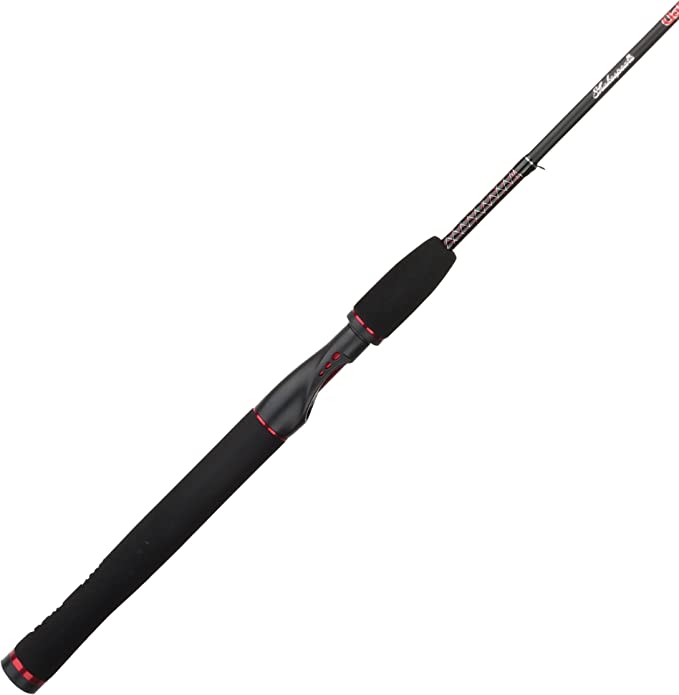US Stove CCS18 Caribou Outfitter Portable Camp Stove: Your Pocket-Sized Adventure Companion
Update on Sept. 6, 2025, 3:56 p.m.
There is a primal comfort in a fire, a deep-seated reassurance that stretches back through millennia. In the cold wilderness, the glow of embers represents more than just warmth; it is a bastion of order against chaos, a center of gravity for human connection. Modern technology has distilled this ancient need into compact, portable forms—steel boxes promising a contained, efficient fire we can carry on our backs. They are marvels of ingenuity.
But what happens when this marvel sputters, chokes, and fills our tent with smoke? What do we learn when a device engineered for the simple purpose of burning wood fails, spectacularly, at that very task? We discover that even in a simple metal box, we are not immune to the fundamental laws of the universe. Using the US Stove CCS18 Caribou Outfitter not as a subject for review, but as a perfect, flawed specimen, we can dissect the intricate dance of physics and engineering that governs whether a fire lives or dies.

The Invisible Engine That Powers a Fire
Observe a campfire and you’ll see a column of hot air and smoke rising. This is more than just exhaust; it’s the visible evidence of a powerful, invisible engine at work. This phenomenon, known as the “stack effect” or “draft,” is the heart of any wood-burning stove. It works on a simple principle of buoyancy: hot air is less dense than cold air. Inside a stove’s chimney, the column of hot exhaust gas is significantly less dense than the ambient air outside, causing it to rise forcefully. This upward rush creates a pressure deficit at the base of the stove, which in turn actively sucks fresh, oxygen-rich air into the firebox through its intake vents.
A well-designed stove, therefore, is a self-powering ventilation engine, driven by the very heat it produces. The fire breathes.
Yet, users of this particular ultra-portable stove consistently report a baffling problem: the fire dies unless the door is left ajar. It “won’t burn wood,” and “smoke just bellows out.” This isn’t a defect; it’s a symptom of a throttled engine. The stove’s design, in a bid for maximum portability, incorporates a very narrow chimney flue—one user estimates it at a mere two inches in diameter. This narrow pipe becomes a bottleneck. It physically limits the volume of exhaust gas that can escape per second, severely restricting the power of the stack effect. The engine can’t rev. Without a strong draft pulling fresh air in, the fire is starved of oxygen, the most critical element of the combustion triangle.
The result is incomplete combustion. Instead of an efficient chemical reaction converting wood into heat, carbon dioxide, and water vapor, the fire smolders. It produces excessive smoke, soot (unburnt carbon), and deadly carbon monoxide. The smoke billowing out isn’t just an annoyance; it’s a visible cry for oxygen, a clear sign that the stove’s thermodynamic engine has stalled.

The Breath and Groan of Stressed Metal
The drama doesn’t end with airflow. Many users report a second, equally frustrating phenomenon: after a single use, the chimney pipe sections become “fused together,” impossible to disassemble. This isn’t a case of metal melting, but a powerful demonstration of a fundamental property of matter: thermal expansion.
When we heat a piece of steel, we are pumping its atoms with kinetic energy. They don’t move from their fixed positions in the crystal lattice, but they vibrate with increasing violence, pushing their neighbors further away. The cumulative effect of these trillions of vibrating atoms is a macroscopic expansion of the entire metal object. When the stove’s chimney sections are hot, they expand. If the manufacturing tolerances—the tiny, intentional gaps between parts—are too tight, this expansion eliminates the gap entirely, locking the sections together with immense force. As the metal cools and contracts, the microscopic deposits of soot and tar left by the smoky fire can act like a cement, making the seizure permanent. The pipe is, in essence, breathing, and its designers didn’t give it enough room to exhale.
This principle of materials under stress takes a more dangerous turn in reports of structural failure. One user recounts a terrifying ordeal where the stove’s legs collapsed because the component holding the chimney to the stove body “snapped off because of the two tack welds.”
This detail is incredibly revealing. In manufacturing, a “tack weld” is a small, temporary spot weld used to hold pieces in alignment before the final, continuous seam is welded. Tack welds are weak by design; they are not intended to bear significant, prolonged loads, especially under the combined stresses of weight, vibration, and repeated cycles of thermal expansion and contraction. Relying on them for the structural integrity of a critical joint is a profound engineering compromise. It’s a decision that prioritizes manufacturing speed and cost over robustness and safety. The groan of the metal as the weld failed was the predictable sound of a known physical limit being breached.

The Great, Unspoken Compromise
It would be easy to dismiss this stove as simply “bad.” But that would be to miss the more profound lesson it offers. The choking fire, the seized pipes, the failed welds—these are not independent flaws. They are the interconnected consequences of a single, unifying design philosophy: the prioritization of portability and cost above all else.
This is the art and agony of engineering: the trade-off. Every single human-made object is a constellation of compromises. To make this stove exceptionally light and packable, its firebox had to be small and its chimney narrow, compromising its thermodynamic efficiency. To make it affordable, its components were made of steel with tight tolerances, not of more exotic alloys with better thermal properties, and its joints were tack-welded, not fully seamed.

The US Stove CCS18 isn’t a failure of design so much as it is a physical manifestation of its chosen priorities. It is a masterclass in compromise. It reveals that the objects we use are not just collections of features, but arguments—arguments for what matters most.
The ultimate lesson, then, is not about which stove to buy. It is about learning to see the invisible forces and silent decisions baked into the world around us. A stove that smokes too much teaches us about fluid dynamics. A pipe that refuses to come apart teaches us about material science. A leg that breaks teaches us about structural engineering. By understanding these principles, we become not just better consumers, but more astute observers of the intricate, compromised, and beautifully physical world we inhabit. The embers of a failing fire can, it turns out, illuminate a great deal.







































